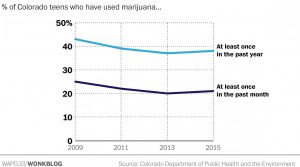It’s difficult to remember the last time the federal government and the provinces came to an agreement on revenue sharing in a single day. But that’s what happened last week when the feds agreed to give the provinces 75 per cent of tax revenue generated by the sale of marijuana.
Initially, the Trudeau government was going to share only 50 per cent of the tax proceeds with the provinces. But when the provinces protested-noting that they will carry the brunt of the costs associated with legalization-Finance Minister Bill Morneau backed down. Like mob bosses divvying up the spoils, everyone went away happy that they were going to get their “fair share” of the latest heist.
The ease and enthusiasm with which the deal was closed reeks of self-interest. Mesmerized by the lure of tax dollars dangled by the federal government, the provinces took the bait and bit hard. Rather than challenging the government’s legalization agenda with the hard questions, they acquiesced without a whimper, thereby selling out the future well-being of our young people.
Perhaps they believed Prime Minister Trudeau’s talking points on marijuana legalization: [1] We need to legalize marijuana in order to keep it out of the hands of children, protect the health of users, and remove the criminal element from the business. Who would not support those outcomes? The problem is, legalization will achieve none of them. In actual fact, it will do the opposite.
 Consider the experience of Colorado: Prior to the legalization of marijuana, youth usage had been in a four-year decline.
[2]
After legalization, this decline abruptly stopped and marijuana usage by youth began to rise. Colorado now leads the U.S. in marijuana usage amongst 12 – 17-year-olds.
[3]
Consider the experience of Colorado: Prior to the legalization of marijuana, youth usage had been in a four-year decline.
[2]
After legalization, this decline abruptly stopped and marijuana usage by youth began to rise. Colorado now leads the U.S. in marijuana usage amongst 12 – 17-year-olds.
[3]
And it’s not just Colorado. Youth usage of marijuana in U.S. states that have legalized marijuana surpasses usage in those that have not legalized. [4]
If this seems odd or merely coincidental, it is neither. Researchers at the University of Michigan noted that, “Perceived risk for marijuana has fallen substantially in recent years as the recent string of states that have legalized recreational marijuana use have led some youth to believe the drug is safe and state-sanctioned.” [5] In other words, legalization creates normalization which decreases the perception of risk and results in increased usage.
So what about Trudeau’s claim that legalizing marijuana will shut down the black market and remove the criminal element? It’s an attractive proposition, but there’s only one problem – the police disagree, the experts disagree and the experience disagrees.
When Joanne Crampton, RCMP assistant commissioner of federal policing criminal operations addressed the House Health Committee studying Bill C-45, she said, “There are a number of issues that will need to be addressed to fight organized crime, including the possibility that the black market could undercut legal marijuana sales.” [6] As for the odds of eliminating the black market through legalization, she said it would be “naïve to think that that could happen.” [7]
Dr. Kevin Sabet, a former drug policy adviser to U.S. President Barack Obama, told the same House Committee that it is delusional to believe that legalizing marijuana will remove the criminal element. [8] [9] The black market has not gone away in Colorado, Oregon or Washington State, which have all legalized the recreational use of marijuana. In many cases, criminal activity has increased. [10] [11] [12] [13]
The government’s suggestion that they can protect public health by legalizing marijuana is also seriously misguided. There is no such thing as a safe supply of marijuana for youth. In the words of Dr. Amy Porath, Director, Research and Policy at the Canadian Centre on Substance Use and Addiction, “There should be no cannabis use below the age of 25 if you want to protect brain development.” [14]
Trudeau tells us that by regulating growing conditions, chemical usage, mould, and THC content, the government will be able to ensure users have a safe, secure supply of marijuana. This is nonsense. The decision to allow homegrown marijuana defeats these efforts. When it comes to home grow operations, it doesn’t matter what your regulations are-the government will never know if they are being followed or not.
The negative health impacts of legalization don’t stop there. You have the problems of second-hand smoke, [15] exposure to children, [16] impaired driving, [17] [18] and the fact that smoking marijuana is far more harmful to your health than smoking cigarettes. [19] [20] All of these issues will be exacerbated by legalization due to the increased usage which inevitably follows. Instead of diminishing health impacts, legalization will be increasing them.
Determining who gets to keep the tax revenue from marijuana sales is like deciding who gets to keep the tolls collected on the road to tragedy. Bill C-45 is horrible legislation which will not achieve its objectives and should never see the light of day. The Senate will do its job and thoroughly study the Bill, but Canadians will be well-served if it is defeated.
Read article in The Hill Times
Footnotes:


